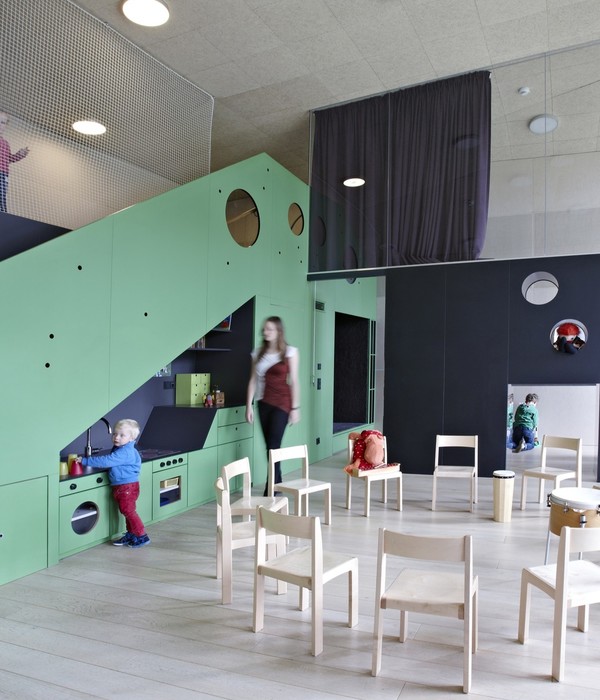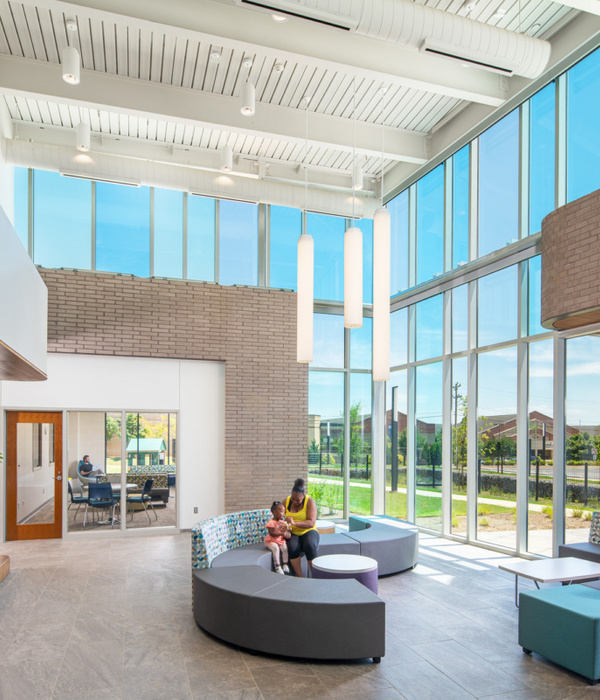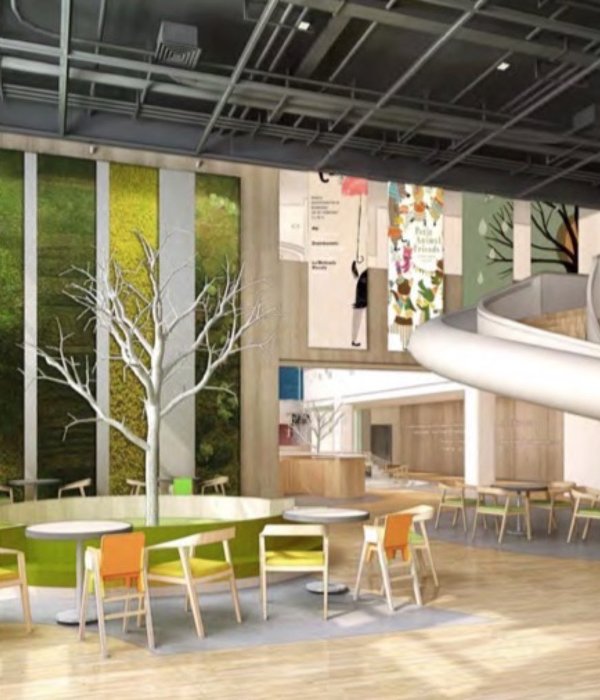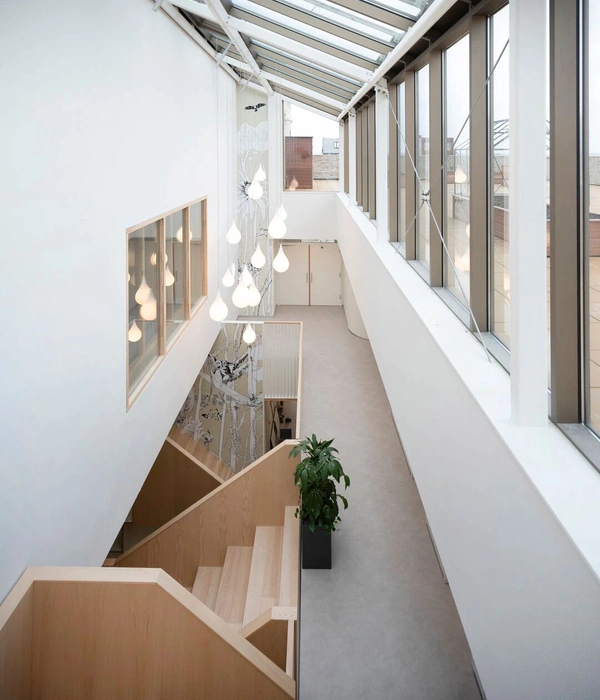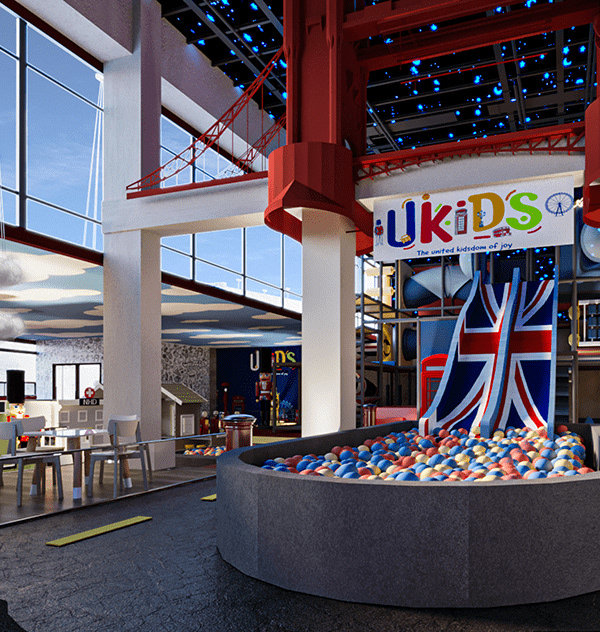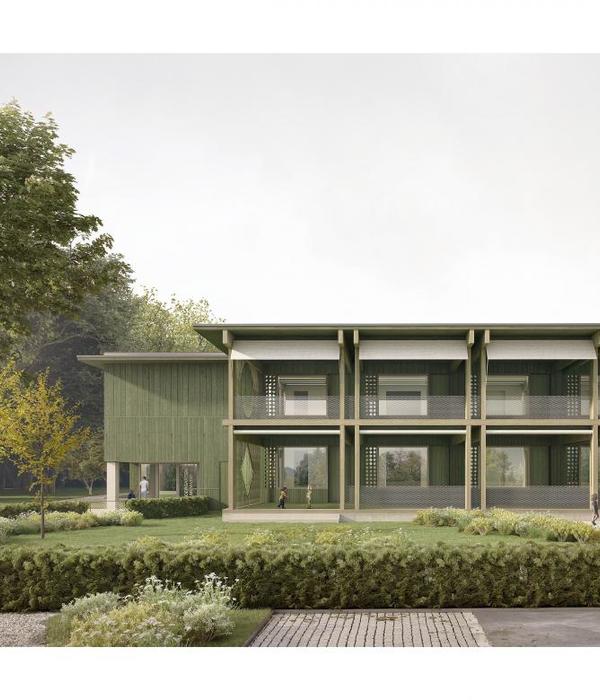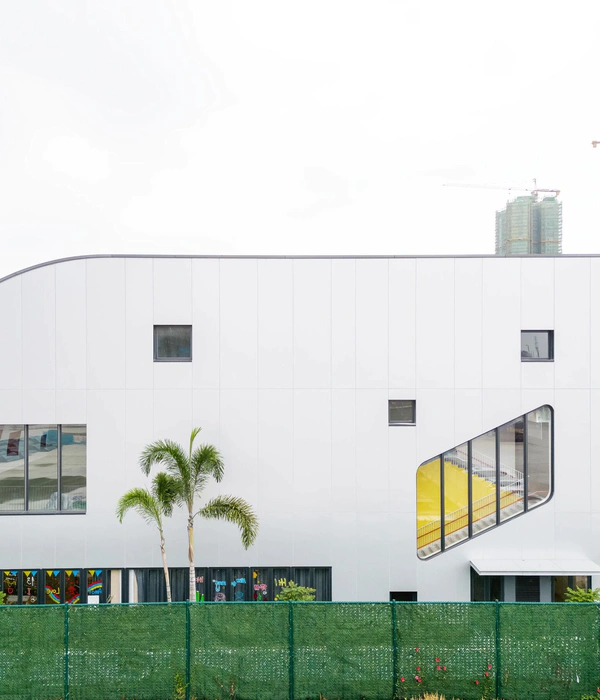Military Academy Laboratory Centre is designed as a joint project by FREA Architects and SCRA Architects. The centre is in the campus area of National Defence University in Ankara which was once used as the military academy. As the most prestigious structure of the campus, it has a closed area of 20.000 m2 for basic education and research functions. The project is designed with the qualities of contemporary architecture and the possibilities of new technologies while considering the requirements of the military hierarchy.
Architectural Design and Spatial Organization
The morphology of the structure is designed by considering the site qualities, the environmental factors, the topographical situation and the immediate surroundings. The morphology is reinforced by innovative material use, efficient spatial arrangement and contemporary engineering solutions.
The building block is positioned behind the main approach road in the north, allowing the perception of the elements of the mass while approaching towards it. In addition, the building entrance is withdrawn and a large plaza was formed between the present deanery building. Low-level masses are aligned next to the protocol road to decrease the total perception of the overall mass. The relationship established with this green area is also strengthened by this decision.
The building block for teaching staff is placed above the fragmented education units on ground level regarding the hierarchical system. Educational units and instructors’ spaces are interconnected with an atrium to ensure spatial continuity. Transparent meeting rooms extending towards the atrium and wide stairways hanging over the void provide a rich and impressive interior that is constantly perceived from the entrance of the building.
The educational units of similar departments (Sociology, Public Administration, etc.) and their faculty members are separated from each other with the condition that only vertical circulation links them together. Flexibility was one of the most important principles of the design process. The fragmented typology of the educational units is preferred in order not to influence the architectural program changes that could be encountered in the later stages of the project development phase. Moreover, the solution of the 8x8-meter axle system is a serious advantage for flexibility.
Educational units, laboratories and classrooms units of each section are packed and placed within the entry-level considering the transportation convenience of military students coming from other buildings in the campus. In addition, the laboratory spaces that make up the name of the project are designed to be easily accessible from the entrance level.
The atrium, which allows visual and physical communication, is a new experience created against the monotony of the usual working spaces. In addition, the spatial quality offered to employees and users in certain Energy Certification Programs (LEED, BREAM etc.) is a very important scoring criterion. This atrium, which should be perceived as the spatial reflection of the communication age, is both a functional and an aesthetic architectural element.
A single-loaded corridor principle is used instead of a double-loaded corridor to enable the atrium space to be perceived within the teaching staff block. This also ensures circulation areas to receive constant natural light and spacious circulation is maintained where the central void is constantly experienced. Access to the upper floors is maintained by service cores that have been resolved in three points and steel ladders hanging from the floors throughout the interior street void.
The atrium area is also shaped to have the ideal scale and natural light quality for activities such as exhibitions, cocktails or publicity. On the southern side of the block, a dining room is located on the top floor opening to the terrace. Thus, academic staff can easily experience the view of the landscape where three sides are open.
Architectural Design: FREA + SCRA
Project Architects: Emre Savural, Fatih Yavuz, Seden Cinasal, Ramazan Avci
Design Team: Esra Nur Barakat, Merve Gorkem, Betul Donmez
Consultants: Zafer Kinaci (Civil Engineering), Bahri Turkmen (Mechanical Engineering), Kemal Ovacik (Electrical Engineering), Tanju Ataylar (Fire Consultant), Funda Ataylar (Lighting Consultant), Habibe Adus Yilmaz (Landscape Architecture)
{{item.text_origin}}

